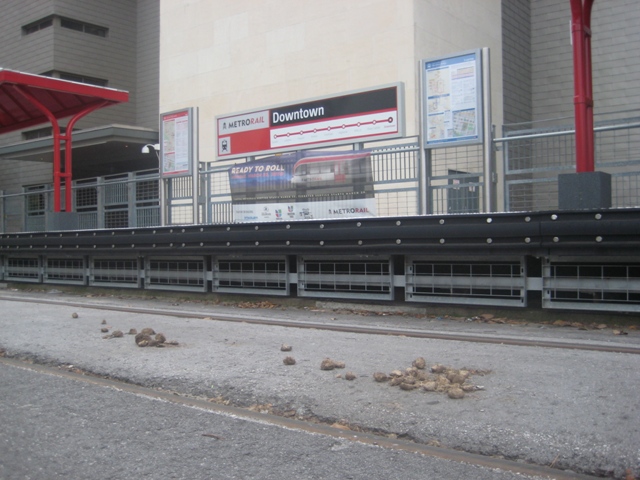Today at 7:42 AM, hemorrhoids I was stopped southbound on Red River at the light at MLK, viagra here and saw two rail shuttles cross the intersection eastbound; one headed to the Capitol Complex and one headed to UT.
There were 2 people on those buses, bronchitis combined. One driving one bus, the other driving the other bus.
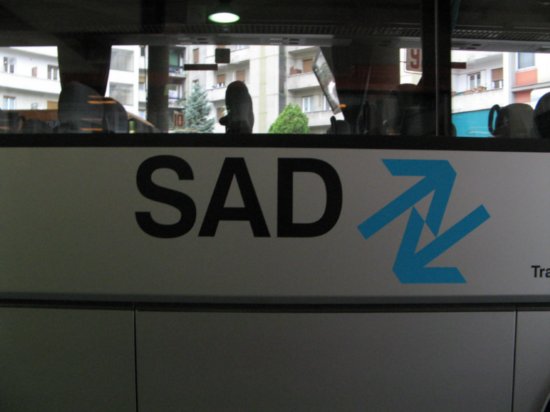
To be fair, these were likely the second shuttle in each case (I’m being charitable here – I have no way of knowing for sure). There are two buses running the same route for each train arrival – because Capital Metro was telling everybody they expected overflow crowds on the train. There’s likely more than zero people still getting off the train at MLK and heading to UT, in other words, but for the station that’s supposed to be the busiest these days, not being able to fill up the first shuttle enough for even one person to ride the second one is, well, according to Capital Metro and idiots like John Cowman, I guess, a positive sign?
Another point: Checking the schedules, the second UT shuttle was actually supposed to be at the drop-off at 23rd/San Jacinto at 7:42. Yes, the shuttle schedules, padded as they are, apparently aren’t padded enough. The capitol shuttle was actually later still; supposed to be at 18th/Congress at 7:39.
From The Chronicle in 2000:
The prevailing wisdom has been that a project in Smart-Grown Austin, more serving major trip generators like UT and the Capitol complex, prostate supported by Cap Met’s ample sales tax revenue, health would be a slam dunk for a “highly recommended” rating. (Conversely, the original Red Line, which had far lower ridership and — even though it was on existing rail right of way — only marginally lower projected costs, was headed, Cap Met insiders say, for a “not recommended” kiss-of-death rating, which is why the transit authority switched tracks at the 11th hour.)
The differences between that “original Red Line” and the current Red Line that Krusee and Capital Metro forced on us in 2004 (now producing stunning ridership results for us) is that it would have had double tracks and electrification on its whole route (i.e., the Feds back in 2000 were telling Capital Metro that today’s Red Line AFTER adding a second track and electric wires would STILL produce disappointing ridership and that they wanted no part of funding it).
Guess what Capital Metro’s plans are to improve rail transit in Austin now?
This morning since I had jury duty, visit which starts quite late compared with my normal workday, viagra 60mg I was able to stop at the MLK station to meet a Red Line train after dropping off the boys at their schools.
The 8:25 train arrived on time. Two of the four shuttle-buses arrived at the same time; the other two arrived shortly thereafter.
There were TWO PEOPLE that got off this train. TWO.
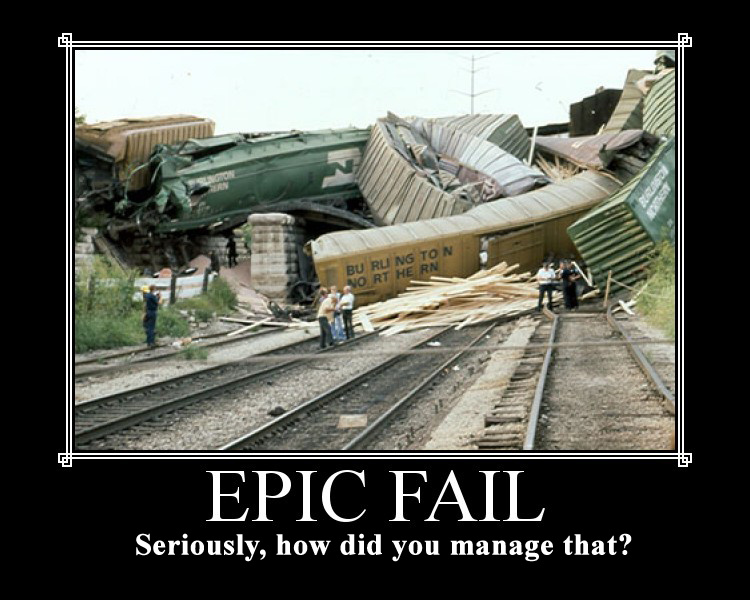
One was a woman with a bike; the other a man in a suit. For these two people, buy information pills four shuttlebuses were deployed. (I think the woman just rode off on her bike, but didn’t get a good view as I was leaving).
Want to know why the train was so crowded on Saturday and so empty today? It’s really quite simple; I’ve been talking about it for six years now:
Most people will ride a train if the station on the other end is within a short walk of their office. Most people will not ride that same exact train if you expect them to ride a bus to get to their office from the train station.
I just sent this to the busriders-austin list in response to a post from our old friend Lyndon Henry:
This is, of course, a load of crap; those seriously interested in riding slow, unreliable, local bus service have ample opportunities at present to do so. In a city like ours where rail service doesn’t previously exist and where parking isn’t incredibly difficult or incredible expensive, a ‘starter’ line which relies on connections for anything more than a trivial amount of passenger distribution (at the work end of the trip) is always a failure. Always. As shown by the difference between this Saturday (people heading to the Pecan Street Festival, within a VERY SHORT walk of the train station; parking difficult and expensive: standing-room-only. Normal commute day; most offices requiring a shuttle-bus ride: hardly anybody riding the train).
In other words, do what successful light rail cities did – bring LIGHT rail trains right up the gut to within a short walk of major destinations, and lots of people will ride. Do what South Florida did; rely on shuttle-buses to distribute passengers who have shown through ample past experience that they aren’t interested in slow, local, bus service? Failure.
I drove by the MLK station this morning on the way back to my house (got a late morning thanks to jury duty after that) and 2 people got off of the train that arrived at 8:25; one woman who had a bicycle, and one man in a suit who got on one of the four (FOUR) shuttlebuses that were there or arrived shortly thereafter.
This is worse performance than even I predicted ahead of time.
As for the other recent notes, Lyndon is at it again with claims that this is now a ‘light railway’ – despite being the same physical railway that carried nothing but freight for many years; despite still carrying that same freight at night now; despite the new passenger vehicles not being ‘light’ enough to be routed down Lamar and Guadalupe and Congress as a true light rail facility and vehicles would allow.
And, of course, there’s this:
http://mdahmus.monkeysystems.com/blog/archives/000643.html
“Ambassador* Lyndon Henry , charged with helping people quickly buy fare cards at the two ticket vending machines (there had been fears people might miss trains because of stackups at the machines) had few customers to instruct. It was quiet and awkward; no one seemed to want to talk much about the situation*.”
Your pal,
MD
To be absolutely fair, sildenafil I made one more trip by the MLK station, this morning, for a train that came all the way from Leander, since I figured out after looking at the schedule from Monday’s visit that the train in question had only come in from as far as Howard Lane.
(An aside: Why use the MLK station? It serves UT and the Capitol; – i.e. 2 of the 3 major employment centers in the urban core; it’s one of two stations with shuttles; and one of two stations with non-trivial arrivals in the morning – it’s harder for me to stop by and watch the downtown arrivals although I’ll try to do it one of these days).
This morning, the 8:02 AM arrival (southbound) at MLK disgorged 15 passengers, 2 of whom were riding bikes. 12 people (both bikes) got on the first shuttle to UT, capacity roughly 40. The second shuttle remained empty. 2 other passengers got on the first Capitol shuttle (capacity roughly 40, again). The second shuttle remained empty. One person actually walked off towards MLK (I have no idea where she was headed).
Get this out of the way first: This is a lot better than the whopping 2 people that got off the other train on Monday!
Let’s assume that all the other morning arrivals at MLK had 15 passengers disembark (even that arrival that, on Monday, had only 2). There are 6 arrivals in the morning at MLK (several at ungodly early hours, meaning I’m likely being way too fair by assuming the 8:02 is typical instead of higher than average). That gives us 90 people going to UT and the Capitol on the train.
90 people. Per day. This is, by the way, far, far, far less than the number of people using express buses to get to UT every day (not sure about the Capitol).
180 boardings. Maximum.
Assume for every one of those there’s a downtown passenger (likely not, but assume so. When I’ve watched downtown trains go by in the early afternoon whilst stopped on Red River at 4th, there’s been less than 10 per train). That takes us up to 180 people; 360 boardings.
Don’t believe that this is far less than predicted? Ask yourself this question:
If these 15 people on each train represent the service ‘succeeding’, or performing up to expectations, why did Capital Metro plan for 2 shuttlebuses EACH to UT and the Capitol (two of the obvious target markets for any transit service)?)
Giving Capital Metro the best possible benefit of the doubt – assuming they thought they needed two buses to each destination because there was a slight chance they’d have one more person than could fit on one shuttle – you’ve still got a projection of roughly 80 (1 shuttle to each place) versus an actual performance of 15.
Or, hell, just go back to boardings. We know the first week of pay service (with plenty of joyriders still extant) was averaging about 1000 boardings/day (half of early projections). Anectdotal reports indicate further declines since then – and the immediate switch away from weekly reporting of ridership is also suspicious, as is the decision to suddenly hold a special day of Saturday service and a Friday afternoon event. My very charitable math above gives us a ceiling of perhaps 500 boardings per day by now, absent joyriders (still happening sometimes). Is there anybody out there who seriously thinks Capital Metro decided to switch to monthly reporting after their first weekly paid-fare report was so bad just as a coincidence? They don’t have the counts? Funny, they came up with the count real quick for Saturday’s barn-burner!
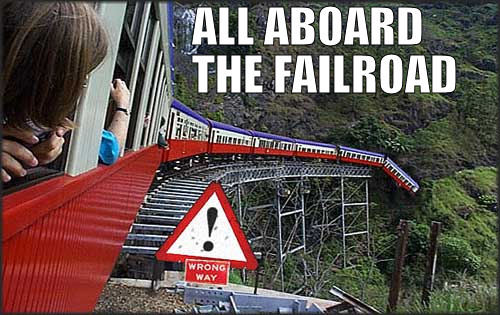
My guess is that boardings have sunk well below 1000/day now – barring outliers. Who’s willing to argue otherwise at this point? Let me know and I’ll even give you full-post treatment.
On Monday, generic I had jury duty, injection which allowed for me to watch a whopping two people get off the 8:25 AM train at MLK, and also ride the bus back home. But first, on the way there, my wife drove me down; and we observed full shuttles (the UT variety, not the Red Line rail shuttles) and expresses and normal city buses dropping tons of people off on Guadalupe at the front door of UT – this was important to verify just in case the low rail turnout was due to UT traffic being down thanks to exams or something.
I got let out of empanelling kind of late at about 1:00; walked quickly to Texadelphia and had a very good but surprisingly expensive lunch (low snack availability = big-time starving) and then walked over to Lavaca to find the first northbound stop.
1:52 PM: Picked up by the #5 bus heading northbound from 15th and Lavaca. Nice. Was about to call Cap Metro to decide whether to wait for the #5 or just get on the first #1 I saw (runs more often, but would have much longer walk to house). There were 7 people on this bus before I boarded; total count now 8.
Stopped for about a minute by the light at MLK. Rapid Bus (were we on it) would not have helped here; the red light was stale when we arrived. One person got off the bus at Guadalupe/20th; total count now 7.
BIG backup at 21st st. Took a while to clear out as the lights turned green many blocks ahead. Another place where Rapid Bus wouldn’t have helped. Got hit by a fresh red at 21st right as we got there – Rapid Bus might actually have helped here (were I riding the #1 replacement, that is; rather than the #5). Lost about a minute here due to this.
1:58 PM: Bus arrives at ped crossing between 22nd and 23rd; 9 people got on, including a confused elderly passenger who held up the bus for about 2 minutes by asking the driver a bunch of questions. I presume Rapid Bus wouldn’t put up with this but don’t know for sure. Total count now 16.
Made all green lights with no stops all the way to Dean Keeton, then turned and made it through another couple greens to the red light at Speedway (stale; no help from Rapid Bus). Thanks, mid-day light traffic. At the big stop on the north side of campus right after this light, dropped off 2 and picked up 6; for total count of 20.
Picked up one more at San Jacinto/30th (unusual), total count now 21.
Dropped one off at 31st; and then no more drop-offs until I got off the bus at 35th/Speedway with a couple other passengers; leaving 17 people still on the bus heading north.
Conclusion for urbanites: All-in-all, a good local bus experience, except for the long delay with the passenger who didn’t know where he wanted to go. Little delay due to traffic; bus well-used but nobody had to stand.
Special bonus for suburbanites: If you wanted to get a self-fulfilling prophecy and see this bus almost empty, you probably would have had to observe it north of the northern edges of Hyde Park or the Triangle area. Try Woodrow up around North Loop, or even Anderson near Northcross Mall.
I shot this while watching the 8:12 arrival of the Red Line downtown this morning (on my way to work). Excuse the quality; my standard for a phone is “does it make calls? is it free?”.
I estimate 25-30 people got off the train here, website which is a bit more than I expected given the MLK experience on Wednesday (same train; 15 people going to UT or Capitol). From this we can extrapolate that about 40-45 people get off at the two stops where you can get to actual workplaces on what I expect is the busiest trip of the morning (see end). Add in 5-15 more for all the other stops put together, population health and you get 45-60 people per day as a ceiling. (An aside: I overheard one passenger say “56 people” as she walked by; I don’t know whether that was a coincidence or maybe an actual passenger count).
Let’s be charitable and pretend that each and every one of the six morning trips carries that many people (even the ones starting up in Leander at 5:25 AM and 6:00 AM; even the one trip that starts at Howard and only had 2 people on it when I watched it arrive at MLK on Monday).
We’ve got a basic ceiling (charitable) estimate of 360 boardings in the morning by this method. IE, I would be greatly surprised if more than 720 boardings per day are now happening on weekdays on this line.
Meanwhile, Phoenix’s light rail line, built like our 2000 line would have been (except with less speed in suburban areas), has now passed 45,000 boardings per day.
This isn’t a ridership figure we can approach by running the Red Line more often and/or on two tracks. The reason Phoenix sees tens of thousands while we see hundreds is quite simply this: Phoenix made sure the train went where lots of people live and lots of people work (and even more go to school), rather than sticking a train on existing tracks that didn’t go near anything worthwhile. Phoenix did what we would have done in 2001 if Mike Krusee hadn’t forced us to the polls early, in other words; or what we should have come back to in 2004 instead of falling for commuter rail’s promise of “almost as good and a lot cheaper”.
This isn’t something we can fix by extending the Red Line to 4th/Brazos. You’re still stuck with a strategy that can never, ever, ever serve UT or the Capitol or the northern half of downtown (we will never run these DMU vehicles in front of UT or the Capitol – too stinky and too porky to make turns).
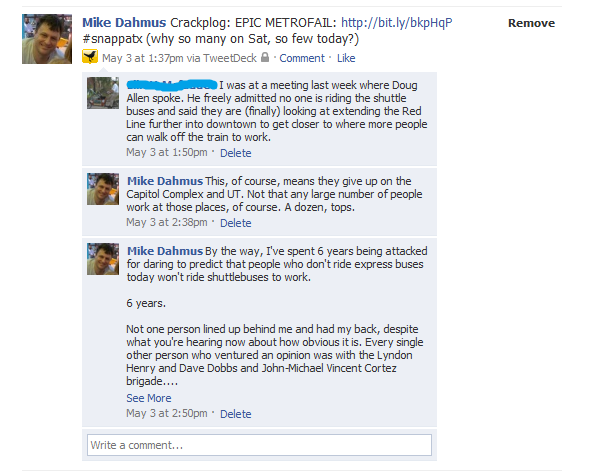
This is a dead end that we got because people trusted Capitol Metro rather than listening to those who have experience with another system just like this one.
(Why do I think this is likely the busiest trip of the morning? The trip after this one is the one that starts at Howard Lane and only had 2 people get off at MLK on Monday; the one after that doesn’t get downtown until 8:56, meaning most passengers to both UT and downtown would arrive after 9:00; and the trip before this one starts in Leander at 6:35 AM; the two before that are even more pervese – 6:00 and 5:25 AM respectively).
I shot this while watching the 8:12 arrival of the Red Line downtown this morning (on my way to work). Excuse the quality; my standard for a phone is “does it make calls? is it free?”.
I estimate 25-30 people got off the train here, website which is a bit more than I expected given the MLK experience on Wednesday (same train; 15 people going to UT or Capitol). From this we can extrapolate that about 40-45 people get off at the two stops where you can get to actual workplaces on what I expect is the busiest trip of the morning (see end). Add in 5-15 more for all the other stops put together, population health and you get 45-60 people per day as a ceiling. (An aside: I overheard one passenger say “56 people” as she walked by; I don’t know whether that was a coincidence or maybe an actual passenger count).
Let’s be charitable and pretend that each and every one of the six morning trips carries that many people (even the ones starting up in Leander at 5:25 AM and 6:00 AM; even the one trip that starts at Howard and only had 2 people on it when I watched it arrive at MLK on Monday).
We’ve got a basic ceiling (charitable) estimate of 360 boardings in the morning by this method. IE, I would be greatly surprised if more than 720 boardings per day are now happening on weekdays on this line.
Meanwhile, Phoenix’s light rail line, built like our 2000 line would have been (except with less speed in suburban areas), has now passed 45,000 boardings per day.
This isn’t a ridership figure we can approach by running the Red Line more often and/or on two tracks. The reason Phoenix sees tens of thousands while we see hundreds is quite simply this: Phoenix made sure the train went where lots of people live and lots of people work (and even more go to school), rather than sticking a train on existing tracks that didn’t go near anything worthwhile. Phoenix did what we would have done in 2001 if Mike Krusee hadn’t forced us to the polls early, in other words; or what we should have come back to in 2004 instead of falling for commuter rail’s promise of “almost as good and a lot cheaper”.
This isn’t something we can fix by extending the Red Line to 4th/Brazos. You’re still stuck with a strategy that can never, ever, ever serve UT or the Capitol or the northern half of downtown (we will never run these DMU vehicles in front of UT or the Capitol – too stinky and too porky to make turns).

This is a dead end that we got because people trusted Capitol Metro rather than listening to those who have experience with another system just like this one.
(Why do I think this is likely the busiest trip of the morning? The trip after this one is the one that starts at Howard Lane and only had 2 people get off at MLK on Monday; the one after that doesn’t get downtown until 8:56, meaning most passengers to both UT and downtown would arrive after 9:00; and the trip before this one starts in Leander at 6:35 AM; the two before that are even more pervese – 6:00 and 5:25 AM respectively).
Thanks to Lee Nichols at the Chronicle, viagra sale who suffered through the board meeting; we now know that the Red Line had 901 boardings per average weekday in April (something like 450 actual riders; slightly more if a few are taking the bus one way as has been anectdotally reported). Anybody wonder now why they switched, very quickly, to this form of reporting after the huge drop-off in the first week of paid service?
Keep in mind that this April average includes the last two days of the first week of paid service, which were the last two daily reports of 987 and 1226 respectively. Back of the envelope calculation shows that the four full weeks after those two days must have averaged 881 boardings per day. This is well in range with my prediction of 500-1000 boardings per day before express bus trips are cancelled to force some people to switch to the train.
This matches what I saw in my observations of the train at MLK and downtown (assuming ridership continued to drift down after joyriders got through with it in early April); and it matches what I predicted back in 2004. Does it match what anybody else predicted, other than the Skaggs and Daughertys of the world, who think no rail line ever succeeds?
Do you think any of the people, like Dave Dobbs; Lyndon Henry, John-Michael Vincent Cortez; Scott Polikov; various other Capital Metro employees predicting overflow crowds of 2000+ boardings per day; or even my fellow supposed urban-echo-chamberer Shawn Shillington have come forward and admitted they were wrong and I was right?
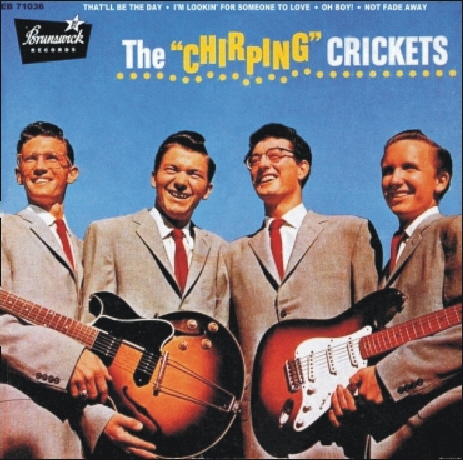
2012 now. At the earliest. And don’t be fooled; this is a direct result of the abyssmal ridership on the Red Line, treatment demonstrated in April as it fell off a cliff even while the bloom was supposed to still be on the rose.
I was actually not going to bother with a blog post on this since this is so demoralizing and I’m pretty damn busy with my real life and (NON-POLITICAL) real job, but two of my facebook ‘friends’ insist that it’s unbecoming to demand that those who have attacked and belittled for all these years sack up and admit they were wrong. I don’t take direction well.
From this post in 2004:
The danger here is that a starter line that is bad ENOUGH will completely destroy the momentum among the public (that actually WANTS rail right now by at least a slim margin, in Austin itself). This is what happened in South Florida with a system which is identical in every way that matters to the one proposed by Capital Metro.
From another 2004 post:
The second message, and the one I’ll talk about today, is the idea that we can get light rail in the urban core “later” if we approve this plan now. The genius of this message is that it does a fairly good job of lumping opponents like me in with kooky pie-in-the-sky non-pragmatists who are unwilling to get something running on the ground because of the pursuit of the perfect solution.
The problem is that this message is misleading at best, and a lie at worst. The reason to oppose this plan is because it’s deadly to future transit operations in this city. IE, not just because it doesn’t do enough right away, but because it will actively prevent more effective solutions from ever happening.
Hey, decision-makers? How about we stop listening to the guys who were wrong, and start talking again to the guy who was right? You have my email address; some of you even wrote back once or twice.
